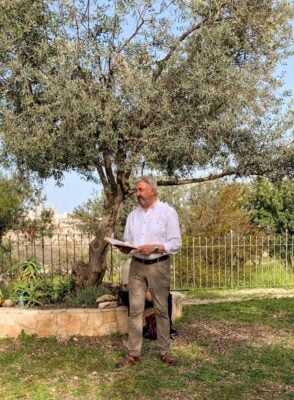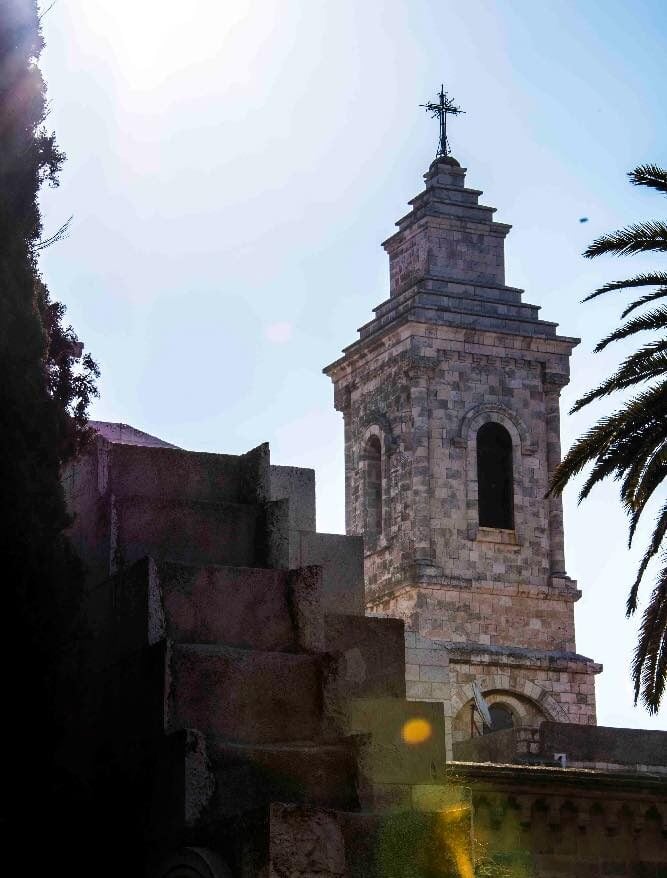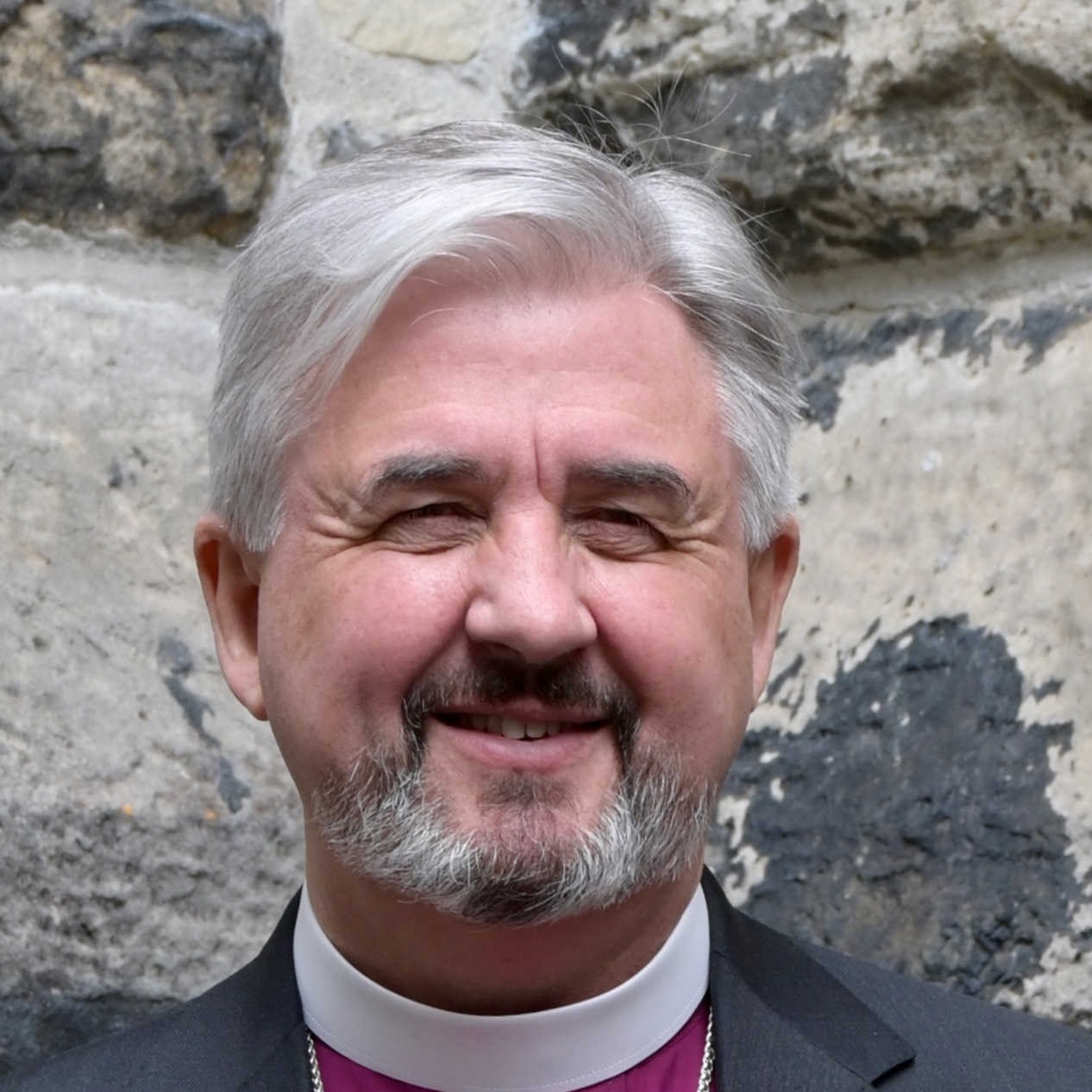This year, Ascension Day falls late in May (a couple of days before the fifth anniversary of my consecration as your bishop). I have always loved the joyful and uplifting hymns we sing on this feast day as we celebrate the exaltation of Jesus as the eternal Christ after his death and resurrection. On Ascension Day we remember the end of Jesus’ earthly journey and rejoice in his transcendent presence with all creation for all time. It was a joy to rename the house that contains our central office after this great feast!
The Gospel of Luke tells us that Jesus ascended from the top of the Mount of Olives near Jerusalem. At some time during the 4th century, a church was built on the site where people believed the event took place. That church was destroyed early in the 7th century and replaced in 1157 by a small Crusader church—which was attacked and abandoned 30 years later and fell into ruins (the Land of the Holy One continues to see this cycle of destruction: please consider a gift through Alongside Hope to rebuild our partner’s Al-Ahli Arab Hospital in Gaza).
In the 1870s, a Carmelite convent was built on the site, and, eventually, a new building was constructed using the old stones and footprint of the 4th century church. It became known as the Church of the Pater Noster (the Lord’s Prayer). No longer the place where the Ascension is remembered (another church now lays claim to that), it is a place where pilgrims commemorate the teachings of Jesus, especially concerning prayer.
The Lord’s Prayer, the way Jesus taught us to pray, speaks to the heart of Christian prayer. It has two basic parts: three petitions glorify God, and three others concern human needs (for sustenance, for forgiveness and for help in times of trial). An integral part of the prayer is an acknowledgment of the primacy of God’s will: “thy kingdom come, thy will be done, on earth as it is in heaven.” The Lord’s Prayer helps us see our particular concerns in the context of the expansive, vibrant sweep of our Creator’s loving purpose for all creation.

Photo: Contributed
Some Christians believe that God provides material wealth, grants favours, and meets very specific requests if you believe the right things, pray for the right things, and act in the right ways. This is not what Jesus taught! Most of us will find that solid faith doesn’t necessarily lead to economic gain, good health and a life of ease. Jesus taught that God is present to each person, regardless of material or physical well-being, and that following God has absolutely nothing to do with self-aggrandizement.
Prayer is about uniting your soul with God. We believe that the Holy Spirit enables us to be drawn into the eternal prayer of Jesus, the exalted Son, to God, the Creator of Creation. Praying is about freely sharing all the hopes, fears, cares, concerns, and contradictions of your life with God who loves you no matter what. Praying is about receiving love and forgiveness and strength to live in this world in a manner that is true to God.
In the life, death, resurrection, and ascension of Jesus, God has shown us that nothing can separate us from the love of God. We are loved whether we win or lose, pass or fail—loved more than we love ourselves and loved more than anyone else can love us. Uniting yourself to God’s strong love as you pray makes you a better person and being a better person means being freer to love and serve other people—as Jesus also taught us to do.


Listening for God’s voice in a time of change